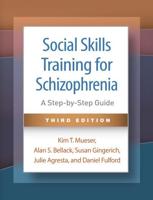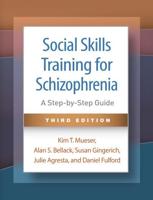Publisher's Synopsis
WT1 is a DNA Binding Protein Containing Four C2H2 Zinc Fingers . . . . . . . . . . . . . . . . . . . . . . . . . . . . . . . . . . . . . . . . . . . . . . 89 The DNA Binding Domain ofWT1 ··············································~··· 90 WT1 Inhibits Tag and SV40 Origin Dependent Replication . . . . . . . . . . . . . . . . . . . . . . . . . . . . . . . . . . . . . . . . . . . . . . . . . . . . . . . . . 97 WT1 is an Unusual C2H2 Zinc Finger Protein . . . . . . . . . . . . . . . . . . . . . . . . . . . . . . . . . . 98 WT1 is a Transcriptional Regulator . . . . . . . . . . . . . . . . . . . . . . . . . . . . . . . . . . . . . . . . . . . . . . . . . . . . 99 Possible Downstream Targets ofWT1 Transcriptional Regulation . . . 103 Protein-Protein Interactions Involving WT1 . . . . . . . . . . . . . . . . . . . . . . . . . . . . . . . . . . . . . 104 Other Factors that May Contribute to or Modify the Cellular Function ofWT1 . . . . . . . . . . . . . . . . . . . . . . . . . . . . . . . . . . 104 WT1 and Apoptosis . . . . . . . . . . . . . . . . . . . . . . . . . . . . . . . . . . . . . . . . . . . . . . . . . . . . . . . . . . . . . . . . . . . . . . . . . . 106 Conclusion . . . . . . . . . . . . . . . . . . . . . . . . . . . . . . . . . . . . . . . . . . . . . . . . . . . . . . . . . . . . . . . . . . . . . . . . . . . . . . . . . . . . . . . . 107 7. Naturally Occurring Mutations in the WTJ Gene . . . . . . . . . . . . . . . . . . 113 Introduction . . . . . . . . . . . . . . . . . . . . . . . . . . . . . . . . . . . . . . . . . . . . . . . . . . . . . . . . . . . . . . . . . . . . . . . . . . . . . . . . . . . . . 113 WTI Mutations in Wilms Tumor . . . . . . . . . . . . . . . . . . . . . . . . . . . . . . . . . . . . . . .. . . . . . . . . . . . . . 114 Analysis of WTI Mutations in Tumors Other than Wilms Tumor . . . 122 Constitutional WTI Mutations and the Denys-Drash Syndrome . . . . . . 125 Conclusion . . . . . . . . . . . . . . . . . . . . . . . . . . . . . . . . . . . . . . . . . . . . . . . . . . . . . . . . . . . . . . . . . . . . . . . . . . . . . . . . . . . . . . . . 131 8. Other Loci Implicated in Wtlms Tumor . . . . . . . . . . . . . . . . . . . . . . . . . . . . . . . . . 137 Introduction . . . . . . . . . . . . . . . . . . . . . . . . . . . . . . . . . . . . . . . . . . . . . . . . . . . . . . . . . . . . . . . . . . . . . . . . . . . . . . . . . . . . . 137 Nephrogenic Rests, WTI Mutations and Wilms Tumor . . . . . . . . . . . . . . . . . . . 137 Undetectable WTI Mutations . . . . . . . . . . . . . . . . . . . . . . . . . . . . . . . . . . . . . . . . . . . . . . . . . . . . . . . . . . . 138 Wilms Tumor and WITI . . . . . . . . . . . . . . . . . . . . . . . . . . . . . . . . . . . . . . . . . . . . . . . . . . . . . . . . . . . . . . . . . . 140 Loss of Heterozygosity for Chromosome 1 p and 16q . . . . . . . . . . . . . . . . . . . . . . . . 141 Wilms Tumor and Beckwith-Wiedemann Syndrome . . . . . . . . . . . . . . . . . . . . . . . . 141 Wilms Tumor and Perlman Syndrome . . . . . . . . . . . . . . . . . . . . . . . . . . . . . . . . . . . . . . . . . . . . . 144 Imprinting, IGF/l, HI9 and Wilms Tumor . . . . . . . . . . . . . . . . . . . . . . . . . . . . . . . . . . . . . . 144 Wilms Tumor and Li-F raumeni Syndrome . . . . . . . . . . . . . . . . . . . . . . . . . . . . . . . . . . . . . . . 149 Familial Wilms Tumor . . . . . . . . . . . . . . . . . . . . . . . . . . . . . . . . . . . . . . . . . . . . . . . . . . . . . . . . . . . . . . . . . . . . . 149 Wilms Tumorand Other Disease Associations . . . . . . . . . . . . . . . . . . . . . . . . . . . . . . . . . 150 Conclusion . . . . . . . . . . . . . . . . . . . . . . . . . . . . . . . . . . . . . . . . . . . . . . . . . . . . . . . . . . . . . . . . . . . . . . . . . . . . . . . . . . . . . . . . 150 Index . . . . . . . . . . . . . . . . . . . . . . . . . . . . . . . . . . . . . . . . . . . . . . . . . . . . . . . . . . . . . . . . . . . . . . . . . . . . . . . . . . . . . . . . . . . . . . 15 7 =====PREFACE===== ilms tumor is a common pediatric neoplasm of the kidney which has been W considered a paradigm for understanding the etiology of embryonal tu- mors.










